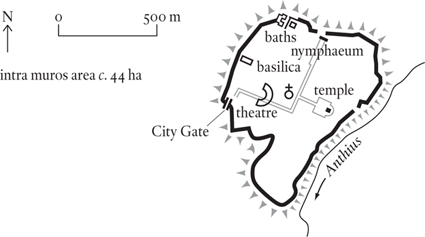
Deserted site near Yalvaç, Isparta province, south-west Turkey
Capital of the late Roman province of Pisidia
Pisidian Antioch was founded by the Seleucid king Antiochus I (281–261 BC) to protect the east–west route across Anatolia. It was a genuine colony. The settlers were Greeks from Magnesia on the Meander, although history doesn’t relate how many there were or how they fared. In fact we know next to nothing about the place until 25 BC when the emperor Augustus decided to restock Antioch with veterans discharged from the Third Legion. This transformed it from a Greek colony into a Roman one. The break with the past seems to have been complete: the version of the emperor’s testament inscribed in the city centre was in Latin, whereas at Ankara, capital of the neighbouring province of Galatia, there were copies in both Latin and Greek.

Strictly speaking, Antioch at this time was not part of Pisidia; it was in either Phrygia (if you took a traditional view of the geography) or Galatia (if you followed the contemporary administrative divisions). The city was therefore properly referred to as Antioch towards Pisidia. However, there is no need to be too pedantic about this, because when Diocletian reorganized the area at the end of the third century, one of his administrative creations was a Pisidian province with Antioch as its capital.
Antioch remained the metropolis of Pisidia until the seventh century when provinces were superseded by themes. Not long after, in 712–13, a marauding Arab army put it to the sack. That was probably the end of Antioch as a city, although the remains of a small Byzantine church show that the place still had a few inhabitants in the Dark Ages. It has been entirely deserted since the Turks moved into the area at the end of the twelfth century.
In the 1920s the site of Antioch was investigated by a team from the University of Michigan. The expedition produced a map of the town, which shows that it covered some forty-four hectares, suggesting a maximum population of 4,000 to 5,000. They uncovered monuments such as an elaborate city gate of the early third century AD and a pair of public squares, one dedicated to Augustus, one to Tiberius, separated by a monumental propylaea (gateway). Remains from the later centuries include a large fourth-century church and the much smaller Byzantine one.